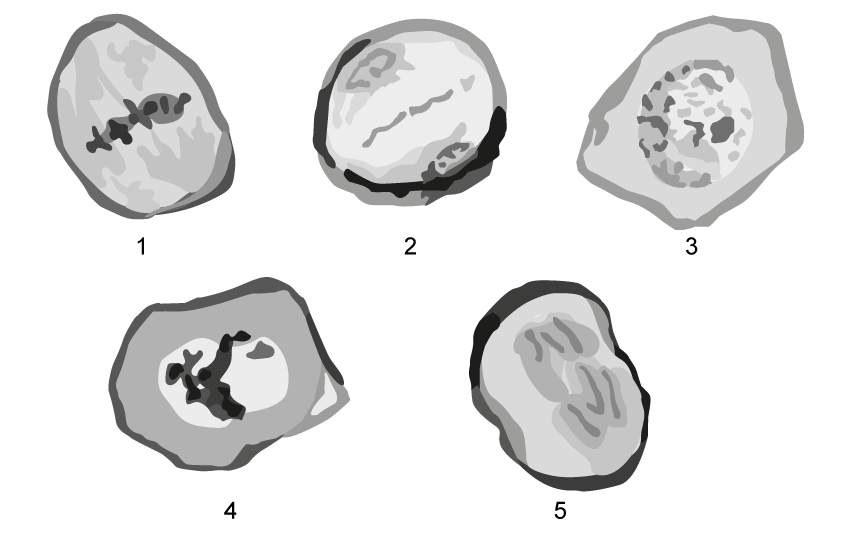Which of the following statements helps to explain why DNA replication happens before meiosis?
- A gamete-producing cell ends up producing 4 gametes.
- The cell undergoes reduction division during meiosis.
- Gametes contain double the amount of genetic material than somatic cells.
- Each parent's genome is replicated to allow two copies of their alleles to be inherited with equal probability.
Which row of the table is correct?
| |
Number of chromosomes in a somatic cell |
Amount of genetic material in a somatic cell |
Amount of genetic material in a gamete-producing cell before prophase I |
| A. |
2n |
x |
2x |
| B. |
2n |
2x |
2x |
| C. |
2n |
4x |
4x |
| D. |
n |
x |
2x |
Which row of the table represents the correct chronological order of cells via which a man's DNA is passed onto his offspring?
| A. |
zygote → spermatozoon → spermatid → spermatocyte |
| B. |
spermatozoon → spermatid → zygote → spermatocyte |
| C. |
spermatid → spermatocyte → spermatozoon → zygote |
| D. |
spermatocyte → spermatid → spermatozoon → zygote |
Which of the following statements apply to the process of crossing over in meiosis?
- Crossing over occurs between non-homologous sister chromatids.
- Crossing over occurs between non-sister homologous chromatids.
- Crossing over involves genetic recombination.
- Unequal-length sections of DNA routinely cross from one strand to another during crossing-over.
Which row of A - D shows the correct names of the phases of meiosis I pictured below?
| |
Image 1 |
Image 2 |
Image 3 |
Image 4 |
Image 5 |
| A. |
anaphase |
telophase |
prophase |
metaphase |
interphase |
| B. |
metaphase |
interphase |
telophase |
prophase |
anaphase |
| C. |
metaphase |
telophase |
interphase |
prophase |
anaphase |
| D. |
anaphase |
interphase |
prophase |
telophase |
metaphase |
